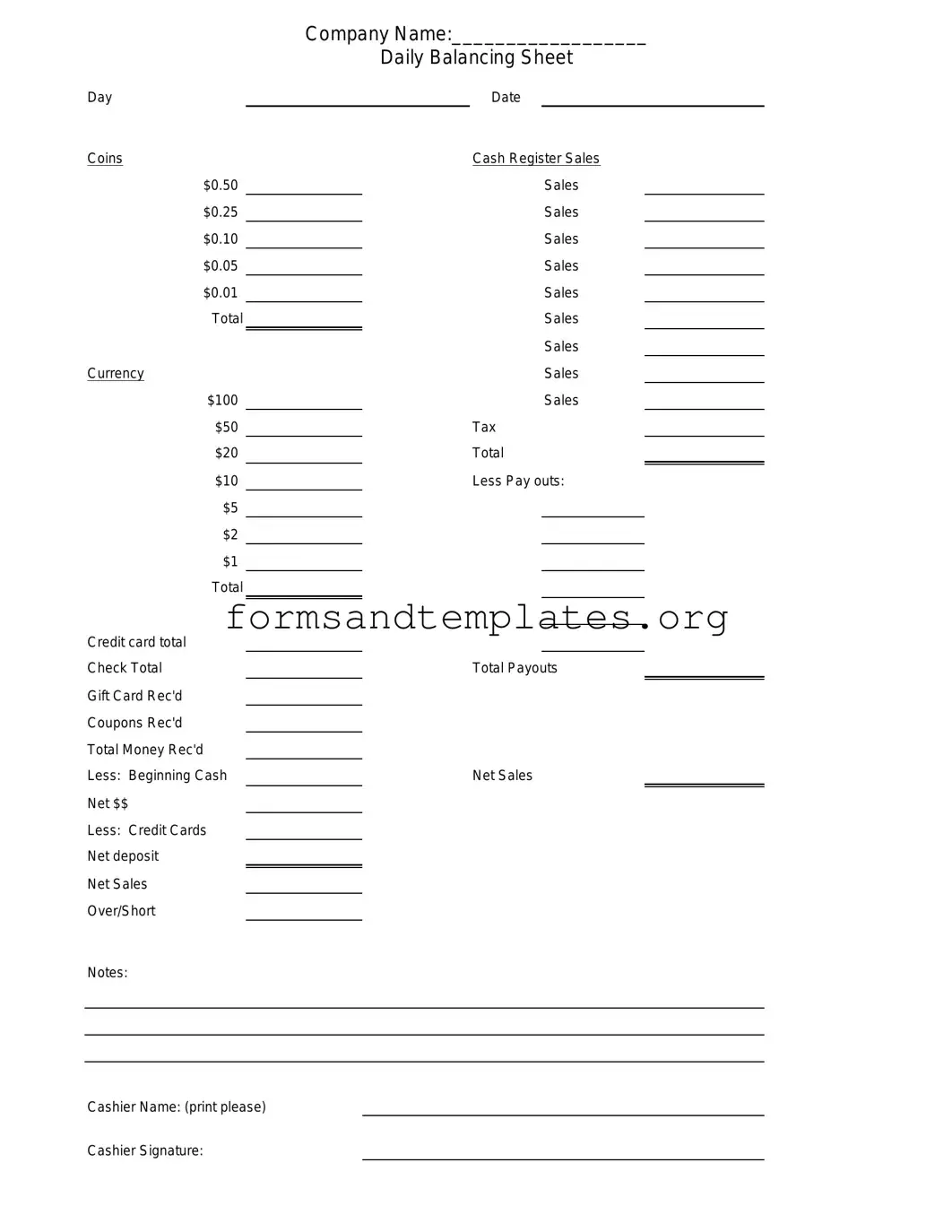What is a Cash Drawer Count Sheet?
A Cash Drawer Count Sheet is a document used by businesses to track the cash in their cash drawers. It helps ensure that the amount of cash on hand matches the sales records. This form is essential for maintaining accurate financial records and preventing discrepancies.
Why is it important to use a Cash Drawer Count Sheet?
Using a Cash Drawer Count Sheet is crucial for several reasons:
-
It helps identify any cash shortages or overages.
-
It provides a clear record for audits and financial reviews.
-
It assists in managing cash flow effectively.
-
It promotes accountability among employees handling cash.
How do I fill out a Cash Drawer Count Sheet?
To fill out a Cash Drawer Count Sheet, follow these steps:
-
Start by entering the date and the name of the person completing the count.
-
Count the cash in the drawer, including bills and coins.
-
Record the amount of each denomination in the designated sections.
-
Calculate the total cash amount and write it at the bottom of the sheet.
-
Sign the form to confirm the count is accurate.
How often should I complete a Cash Drawer Count Sheet?
It is recommended to complete a Cash Drawer Count Sheet at the end of each shift or daily. Frequent counts help catch errors early and maintain accurate cash records. Some businesses may also conduct counts during busy periods or after significant transactions.
What should I do if I find a discrepancy in the cash count?
If you discover a discrepancy, take the following steps:
-
Double-check your count to ensure accuracy.
-
Review recent transactions to identify possible errors.
-
Consult with other employees who handled the cash during the shift.
-
Document the discrepancy on the Cash Drawer Count Sheet.
-
Report the issue to your supervisor or manager for further investigation.
Can I use a digital version of the Cash Drawer Count Sheet?
Yes, many businesses opt for digital versions of the Cash Drawer Count Sheet. Digital forms can streamline the counting process, reduce errors, and simplify record-keeping. Ensure that any digital version maintains the same essential information as the paper form.
What happens if I lose a Cash Drawer Count Sheet?
If a Cash Drawer Count Sheet is lost, it is important to recreate the count as accurately as possible. Gather information from sales records and any other related documents. Report the loss to your supervisor and implement measures to prevent future occurrences.
While there is no universally mandated format, a Cash Drawer Count Sheet should include key elements such as:
-
Date of the count
-
Name of the person conducting the count
-
Breakdown of cash denominations
-
Total cash amount
-
Signature of the person completing the count
Customizing the format to suit your business needs is acceptable, as long as it captures all necessary information.
Who is responsible for completing the Cash Drawer Count Sheet?
The responsibility typically falls on the employee managing the cash drawer during their shift. However, businesses may designate specific personnel, such as a manager or supervisor, to oversee the counting process and ensure accuracy.

